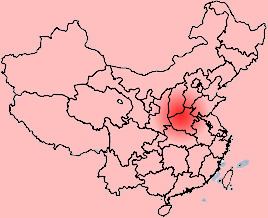Country China | ||
 | ||
Major Cities Zhengzhou; Luoyang; Kaifeng; Xinxiang | ||
The origins of the ghost festival yulanpen or zhongyuan festival
Zhongyuan (Chinese: 中原; pinyin: Zhōngyuán), Chungyuan, or the Central Plain, also known as Zhongtu (Chinese: 中土; pinyin: Zhōngtǔ), Chungtu or Zhongzhou (Chinese: 中州; pinyin: Zhōngzhōu), Chungchou, is the area on the lower reaches of the Yellow River which formed the cradle of Chinese civilization. It forms part of the North China Plain.
Contents
- The origins of the ghost festival yulanpen or zhongyuan festival
- Welcome to zhongyuan university of technology
- References
In its narrowest sense, the Central Plain covers modern-day Henan, the southern part of Hebei, the southern part of Shanxi, and the western part of Shandong province. A broader interpretation of the Central Plain's extent would add the Guanzhong plain of Shaanxi, the northwestern part of Jiangsu, and parts of Anhui and northern Hubei.
Since the beginning of recorded history, the Central Plain has been an important site for Chinese civilization.
In the pre-Qin era, present-day Luoyang and its nearby areas were considered the “Center of the World”, as the political seat of the Xia dynasty was located around Songshan and the Yi-Luo river basin.
Inscriptions on some bronze objects from this era contain references to the 'Central States' (Zhongguo), 'Eastern States', or 'Southern States'. This indicates that the Central Plain, which was referred to as the 'Central States' in these inscriptions, was considered to occupy the center of the world.
In a broader context, the term Zhongyuan refers to Chinese civilization and China proper, regions directly governed by centralized Chinese governments and dynasties. However, when used to describe the Chinese civilization, Zhongyuan often connotes Huaxia and Han Chinese cultural dominance.
The Dungans, a Chinese-affiliated ethnic group, are referred to using terms linked to Zhongyuan.
